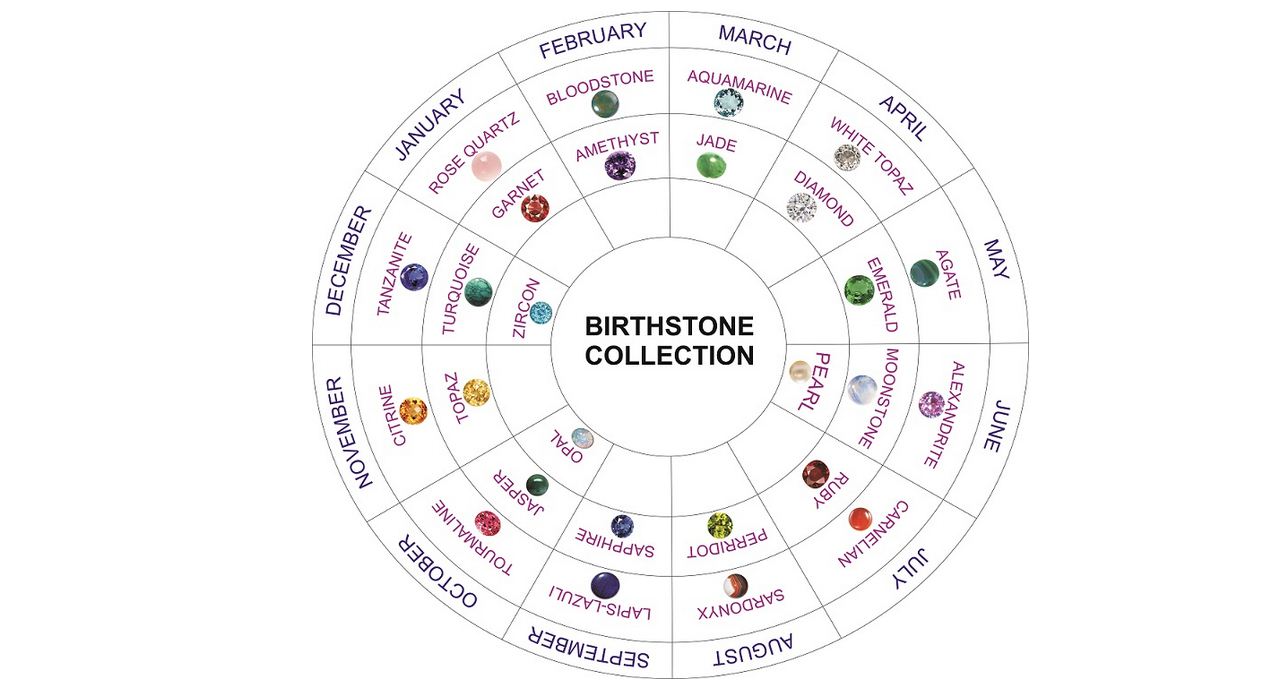Amethyst has been a prized gem to man for thousands of years.
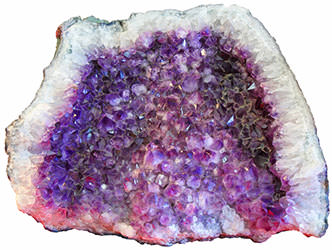
These gems have been set in religious and crown jewels and have been worn by bishops and figures of the Christian church for ages. It was even thought that Saint Valentine wore a ring set with an antique amethyst with a carved image of Cupid, which then connects the dots to the gem’s ties with the month of February! The stone also symbolizes the 6th anniversary of marriage.
With being such a popular gem used throughout history, there are many legends and folklore that can be found for amethyst. At one time, true amethyst was valued equally with the diamond. However, after large amounts were found in South America and eventually all over the globe, the gem’s rarity and value decreased.
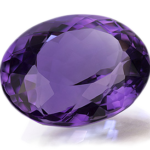
History:
We can thank the Ancient Romans for the most famous folklore legend about amethyst. Because of the gem’s grape-like color, the Romans associated it with the god of wine, Bacchus. They believed that wearing an amethyst could protect you from drunkenness and instill a sober mind. The name “amethyst”, is actually derived from the Greek word amethustos, meaning sober.

The legend goes:
Long ago, a beautiful woman was on her way to worship at the Temple of Diana. However, she had the misfortune of crossing bath with Bacchus, the god of wine. Bacchus was angered since he’d just been disrespected, he vowed he would take revenge on the next person he met. He spied the woman and unleashed his two guardian tigers on her. As the great beasts bounded towards her, the goddess Diana intervened. To spare her such a terrible fate, she turned her into pure, clear stone.
With immediate remorse, Bacchus wanted to atone for his actions. He poured his tears of wine over the stone, staining her a deep, violet hue. And so, the maiden Amethyst lent her name to the crystal.
Throughout time, many other legends and uses appeared for the amethyst gemstone; but we think we can all agree that the Roman’s legend for the gem is our favorite!
Symbolism:
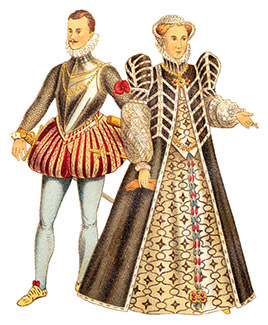 Like we said earlier, amethyst is the gem that modernly symbolizes the month of February and the 6th anniversary of marriage. During the Renaissance period, amethyst stood for humility and modesty. Throughout the ages, the gem was also used by rich and powerful monarchs for symbolize royalty. It’s rumored that the gemstone was a personal favorite of Queen Katherine the Great of Russia, who reigned during the late 1700s. Amethyst has always been a symbol of religious classes that have ruled human cultures. In the Chinese philosophy of Feng Sui, amethyst is said to give and receive material wealth. At the highest level of the philosophy, the gem is said to give the spiritual understanding required to reach the state of bliss. Even today, amethyst represents the crown chakra at the top of the head where divine essence enters.
Like we said earlier, amethyst is the gem that modernly symbolizes the month of February and the 6th anniversary of marriage. During the Renaissance period, amethyst stood for humility and modesty. Throughout the ages, the gem was also used by rich and powerful monarchs for symbolize royalty. It’s rumored that the gemstone was a personal favorite of Queen Katherine the Great of Russia, who reigned during the late 1700s. Amethyst has always been a symbol of religious classes that have ruled human cultures. In the Chinese philosophy of Feng Sui, amethyst is said to give and receive material wealth. At the highest level of the philosophy, the gem is said to give the spiritual understanding required to reach the state of bliss. Even today, amethyst represents the crown chakra at the top of the head where divine essence enters.
Mystical Properties:
To this day, amethyst is still used for healing remedies and spiritual enlightenment. For over two thousand years, the gems have been saturated with ancient magic. They are just as popular today as were back then!
Amethyst has had a presence in cultures all over the world. Centuries ago, amethyst was actually moistened and rubbed on the skin to prevent pimples and rough skin. In traditional Chinese medicine, it was used for stomach pains and bad dreams; and ancient civilizations believed that if the gem was placed under the pillow while sleeping, it was supposed to banish insomnia and promote pleasant thoughts and often prophetic dreams.
From alleviating headaches and depression, to being valuable for treating the central nervous system & brain, amethyst has hundreds of healing properties. It’s been said for centuries that the gem can bring forth the purest aspirations of human kind: chastity, sobriety, and control over one’s thoughts. The stone encourage calm, bravery, and contemplation.
This post could go on and on if we listed all of the properties and historical value associated with amethyst gemstones!
One thing is for sure- no matter if February is your birth month or not, sporting this stone can give you some serious health benefits and not to mention good graces while enjoying a few adult drinks!
source: jewelsforme.com


 The word garnet is originally derived from the Latin word, ‘garantum’, meaning seed. This name for the gem came to be because of the gem’s resemblance to the bright, beautiful red seeds of the pomegranate. Although the most common garnet range in tones of
The word garnet is originally derived from the Latin word, ‘garantum’, meaning seed. This name for the gem came to be because of the gem’s resemblance to the bright, beautiful red seeds of the pomegranate. Although the most common garnet range in tones of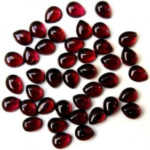
 The list of symbolic meanings for wearing the garnet goes on and on. Not only is garnet the designated gem for births in the month of January, it also symbolizes the the 2nd anniversary of marriage. For centuries, garnet’s virtues have been believed to include passion, eternity, and love. One of the stone’s strongest virtues is the ability to help overcome depression. It was believed that the stone could dissolve behavior that is no longer positive, and aids in letting go of useless or old ideas. Supposedly, the garnet gemstone has extreme benefits in the realm of business. It’s said that the stone attracts people to the wearer which aids in business as well as personal success!
The list of symbolic meanings for wearing the garnet goes on and on. Not only is garnet the designated gem for births in the month of January, it also symbolizes the the 2nd anniversary of marriage. For centuries, garnet’s virtues have been believed to include passion, eternity, and love. One of the stone’s strongest virtues is the ability to help overcome depression. It was believed that the stone could dissolve behavior that is no longer positive, and aids in letting go of useless or old ideas. Supposedly, the garnet gemstone has extreme benefits in the realm of business. It’s said that the stone attracts people to the wearer which aids in business as well as personal success!

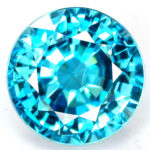 fun to research and learn about because of the range of legends, mystical properties, and trends the gem has curated over time and throughout different cultures. During the middle ages, people believed that zircon can induce sleep, promote prosperity, and even ward off evil. The gem was most popular, however, during the Victorian age, in English estate jewelry throughout the late 1800s.
fun to research and learn about because of the range of legends, mystical properties, and trends the gem has curated over time and throughout different cultures. During the middle ages, people believed that zircon can induce sleep, promote prosperity, and even ward off evil. The gem was most popular, however, during the Victorian age, in English estate jewelry throughout the late 1800s. Turquoise has been admired since ancient times and across TONS of cultures. The word, turquoise, dates back to the 13th century. It’s meaning: “Turkish Stone”. The stone was introduced to Europe by travelers from Turkey. With a powdery blue to robin’s egg green color, it’s an easily recognizable gem to trace back through cultures.
Turquoise has been admired since ancient times and across TONS of cultures. The word, turquoise, dates back to the 13th century. It’s meaning: “Turkish Stone”. The stone was introduced to Europe by travelers from Turkey. With a powdery blue to robin’s egg green color, it’s an easily recognizable gem to trace back through cultures. become its main distributor. The company is actually who deemed the stone’s names as “Tanzanite” in order to highlight the stones exclusive geographic origin. They introduced the gem to the public with a promotional campaign in 1968.
become its main distributor. The company is actually who deemed the stone’s names as “Tanzanite” in order to highlight the stones exclusive geographic origin. They introduced the gem to the public with a promotional campaign in 1968.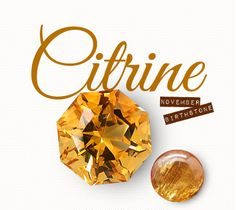 Hello! HAPPY THANKSGIVING! Our favorite holiday. Not only for the pie- but for the shopping! The start of the holiday season is always the best. It calls for baking cookies and snuggling up next to the fire, and concocting a well-thought-out list for the big man in red. (plus, it never hurts to hand out the list to your loved ones!) Most people build a list based on the winter season; things like snowboards, remote car-starters, and heated blankets are commonly asked for here in Montana (and for those others who actually get to experience a white Christmas!).
Hello! HAPPY THANKSGIVING! Our favorite holiday. Not only for the pie- but for the shopping! The start of the holiday season is always the best. It calls for baking cookies and snuggling up next to the fire, and concocting a well-thought-out list for the big man in red. (plus, it never hurts to hand out the list to your loved ones!) Most people build a list based on the winter season; things like snowboards, remote car-starters, and heated blankets are commonly asked for here in Montana (and for those others who actually get to experience a white Christmas!).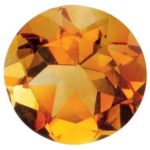 For centuries, citrine gemstones have been sought after for their healing properties. The warm golden yellows were known to be used to purify the body of toxins, strengthen the immune system, and improve blood circulation. The gem’s vibrant hues were thought to have to ability to elevate your moods, and treat depression and even heartache! (Talk about powerful!) Now although most don’t believe in the healing powers of crystals and minerals that are trending though pop culture right now, the association of citrine with health, hope and joy remains!
For centuries, citrine gemstones have been sought after for their healing properties. The warm golden yellows were known to be used to purify the body of toxins, strengthen the immune system, and improve blood circulation. The gem’s vibrant hues were thought to have to ability to elevate your moods, and treat depression and even heartache! (Talk about powerful!) Now although most don’t believe in the healing powers of crystals and minerals that are trending though pop culture right now, the association of citrine with health, hope and joy remains!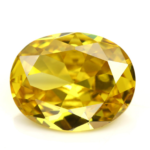 Both citrine and topaz are known for their calming energies, and bringing warmth and fortune. They actually look so similar that throughout history, they’ve often been mistaken for one another. (only the yellow topaz, of course!). Because of all the color topaz occurs in, it’s been mistaken for many other gems over history as well. Most natural topaz is a pale blue shade, while the most rare and valuable topaz is yellow, or pink to reddish-orange; while red and violet shades are incredibly rare. These gems are commonly treated to enhance their hues for jewelry.
Both citrine and topaz are known for their calming energies, and bringing warmth and fortune. They actually look so similar that throughout history, they’ve often been mistaken for one another. (only the yellow topaz, of course!). Because of all the color topaz occurs in, it’s been mistaken for many other gems over history as well. Most natural topaz is a pale blue shade, while the most rare and valuable topaz is yellow, or pink to reddish-orange; while red and violet shades are incredibly rare. These gems are commonly treated to enhance their hues for jewelry.

